Throughout history, the death of an heir has had a mixed impact on contemporaries. Inevitably a sad event the loss of the heir apparent is not just a blow to the royal family and the court, but to the nation who had, in them, seen their future monarch. Where the heirs were popular the public mourned as though they had lost a member of their own family and even if they weren’t, the death had the potential to present a succession crisis. Here are a selection of the lost heirs in British history and the varying effects their deaths had on the public and/or the succession.
William Adelin
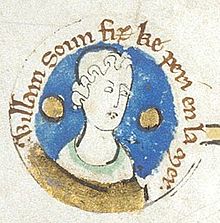
Despite having over twenty children, Henry I had only the one legitimate son; William Adelin. While Adelin was considered spoiled or pampered, he was also noted as applying himself to his responsibilities which bode well for a future king. As the son of a Norman king and an Anglo-Saxon princess, Adelin embodied a reconciliation between the two sides and so his reign was anticipated with hope. On 25th November 1120, the royal family and the English court were making their way back to England from Normandy on two ships. Henry I arranged to return on one ship but allowed around three hundred people from his retinue to return on ‘The White Ship’, including the seventeen-year-old Adelin and two of his illegitimate children; Richard of Lincoln and Matilda, Countess of Perche. Without the supervision of the stricter elements at court, the party proceeded to remain in port drinking excessively and Adelin himself was supposedly responsible for allowing the crew to join the festivities and distributing alcohol among them. As the revelry continued, many on board the ship found themselves unable to travel, among them Stephen of Blois who would become king of England after the events that followed.
Confident that the White Ship was capable of overtaking the other ship, the retinue urged the captain to put to sea even though by now it was dark and the crew may have been drunk. Soon after the ship struck a submerged rock and sank swiftly. Initially, Adelin escaped on a small boat, but upon hearing the cries of his half-sister still on the ship, he had the boat return but it was swamped by survivors and the occupants already in the boat drowned. There was a story that the captain survived, but when he heard that Adelin had died, he committed himself to the depths rather than face the king. All aboard were lost, except for one man; a butcher who survived by clinging to a rock until rescue came.
When news reached England, nobody wanted to inform the king and eventually, the Archbishop of Canterbury persuaded a servant boy to do it. When Henry heard the news he collapsed from grief, tore his beard and wept profusely. It was said that he never smiled again. For the moment the king and the nobility were devastated by the loss of Adelin and so many prominent nobles, but Adelin’s death would have longer lasting political repercussions. Without a legitimate son, the succession turned to Henry’s daughter Matilda, but despite the support, Henry attempted to garner from the barons the prospect of a sole Queen ruling was unpopular. Negotiations had been in place for Henry to marry Adeliza of Louvain, but after Adelin’s death, Henry was keen to conclude them and the following year the pair were married. Despite Henry’s proven virility, they did not produce a child, though Adeliza would have children with her second husband. Without a legitimate son to succeed him, upon Henry’s death England entered a period known as the ‘Anarchy’ where his daughter Matilda vied for the throne against Henry’s preferred nephew; Stephen of Blois.
Edward of Woodstock, the Black Prince
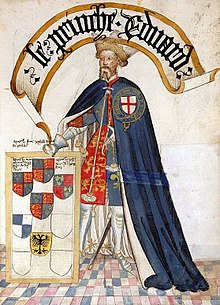 Although Edward of Woodstock had a comparatively long life, dying at forty-five, he predeceased his father by a year and his death was widely mourned. Edward had been extremely popular at home after a successful military career and was considered the embodiment of chivalry, so much so that his death was mourned as the end of chivalry. The people mourned the loss of the king they might have had and feared for the future.
Although Edward of Woodstock had a comparatively long life, dying at forty-five, he predeceased his father by a year and his death was widely mourned. Edward had been extremely popular at home after a successful military career and was considered the embodiment of chivalry, so much so that his death was mourned as the end of chivalry. The people mourned the loss of the king they might have had and feared for the future.
Edward III was at the time an old man and increasingly relying on his sons to deal with matters of the kingdom. The Black Prince spent much of his time abroad but suffered from recurring bouts of illness from the mid-1360s while his unpopular brother, John of Gaunt, worked against him at the English court which led to further military failures for Edward. He returned to England in 1371 extremely ill and suffering even more since the death of his eldest son, another Edward. Although he rallied in the coming years, by 1376 he had fallen ill again and this time he realised he would not recover. Around the same time, Parliament was convened and they addressed the level of corruption at court, especially among the king’s closest advisers and his mistress, Alice Perrers, who was seen to have too much control at court to the detriment of the king and the nation. Aware he was dying, Edward also knew that his aged father would surely not last long and John of Gaunt’s faction at court posed a threat to the stability of the kingdom. While Parliament was in session Edward worked to have the succession secured on his son, Richard. Even though John of Gaunt enjoyed considerable control in light of their father’s age and Edward’s illness, the king and parliament were in favour of Richard’s succession. The king and John of Gaunt swore an oath to uphold Richard’s claim to the throne while the nine-year-old boy was summoned before parliament and recognised as Edward III’s heir. With this success, Edward resigned himself to the inevitable and spent his final days in prayer, dying on the 8th June 1376 while parliament was still in session.
As the very model of a chivalrous knight, Edward was greatly mourned. Across the sea, Charles V of France held a funeral service for him, even though they had been enemies in life and much of the Black Prince’s military successes had been against France. Jean de Grailly, Captal de Buch, had been a prominent military commander under the Prince and was also praised as a hero of chivalry. When he was told of Edward’s death he himself refused food and water and died just a few days later, adding to the notion that the chivalrous age had passed. Edward III was affected by the death of his son and his health continued to deteriorate, allowing John of Gaunt to expand his power base and at the following parliament, he reversed many of the anti-corruption measures that had been imposed at the previous gathering. Edward III died a year after his son, leaving Richard to succeed as Richard II at ten years old, though he would later be deposed by John of Gaunt’s son, Henry Bolingbroke.
Edward V and Richard of Shrewsbury, Duke of York
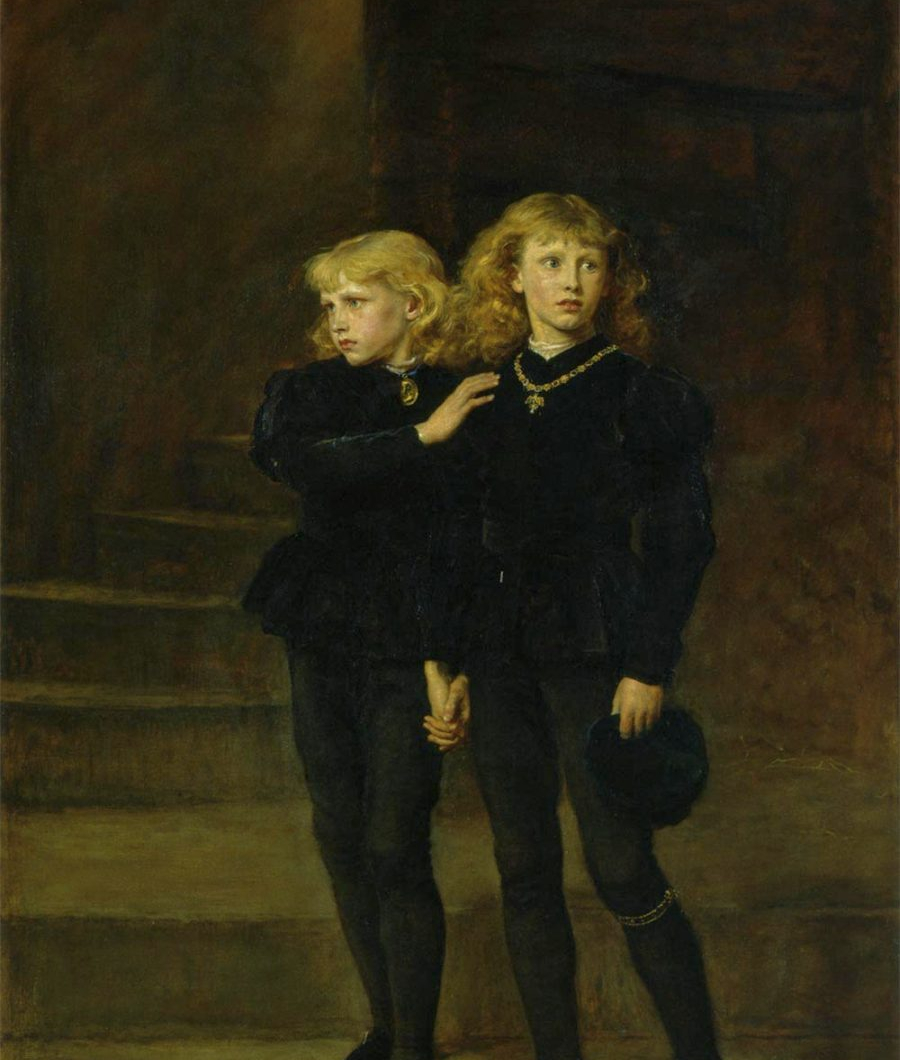 The disappearance of the young Edward V and his brother Richard from the Tower of London had repercussions that were felt throughout the kingdom, even if they weren’t mourned in the traditional sense. Edward had been king for just over two months in 1483 when the lord protector, his uncle, Richard of Gloucester had him declared illegitimate and assumed the throne as Richard III. Edward was placed in the Tower of London along with his younger brother, Richard, but they were not seen again after the summer of that year.
The disappearance of the young Edward V and his brother Richard from the Tower of London had repercussions that were felt throughout the kingdom, even if they weren’t mourned in the traditional sense. Edward had been king for just over two months in 1483 when the lord protector, his uncle, Richard of Gloucester had him declared illegitimate and assumed the throne as Richard III. Edward was placed in the Tower of London along with his younger brother, Richard, but they were not seen again after the summer of that year.
By the autumn there were rumours that the princes had been murdered and the prime suspect was the new king Richard. For as long as they were alive the princes were the potential focus of rebellions and shortly before their disappearance there was an attempt to rescue them, but with their disappearance came rumours that the king had murdered his nephews while they were in his care. Such rumours were not limited to England with the French court speculating on the matter, while at home the issue galvanised Richard’s detractors. Supporters of the late Edward IV and his sons, mostly based in the South of England, were already in the process of conspiring against Richard when the princes’ mother Elizabeth Woodville joined in their plotting. She arranged with Lady Margaret Beaufort the marriage of their children, Elizabeth of York and Henry Tudor, a Lancastrian claimant in exile, in the hopes that Richard would be deposed and Henry would accede with Elizabeth as his queen.
The revolt attracted support from a number of quarters. In the first place, there were those who supported Edward V and disapproved of Richard’s assumption of the throne, the prominent Woodville family and natural supporters of Henry Tudor. The rumours that Richard had murdered the princes prompted already dissatisfied nobles to turn against the king, while some of his actual supporters felt complicit in the boys’ death given their support of Richard, something they could not countenance. Although the rebellion was quashed, in part due to the sheer scale of it, many prominent nobles left England and joined Henry Tudor in exile.
The shadow of the princes would hang over Richard III for the remainder of his reign, as it would Henry Tudor when he ascended the throne in the form of Perkin Warbeck. A year after the princes had disappeared Richard’s only legitimate son and his heir, Edward of Middleham died suddenly at the age of ten. For many, this was proof of Richard’s involvement with the death of his nephews and seen as divine retribution. The following year his wife, Anne, died on the day of an eclipse further fuelling the notion that Richard was not in favour with God. On top of this, Richard’s reputation was already poor enough that he was forced to issue a statement that he had not poisoned his wife in order to marry his niece, Elizabeth of York. The rebellion was ultimately successful when Henry Tudor returned to Britain and deposed Richard at the Battle of Bosworth.
Henry Frederick, Prince of Wales
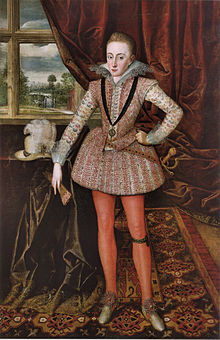 The loss of William Adelin prompted a succession crisis, while Edward the Black Prince was mourned for his personal conduct; the death of Henry Frederick, the eldest son of James I of England saw both an outpouring of public grief and parliament having to deal with the potential crisis his death had caused.
The loss of William Adelin prompted a succession crisis, while Edward the Black Prince was mourned for his personal conduct; the death of Henry Frederick, the eldest son of James I of England saw both an outpouring of public grief and parliament having to deal with the potential crisis his death had caused.
In life and in death Henry Frederick shared many similarities with Arthur Tudor, the son of Henry VII who had died a hundred years before. Both were raised to take the throne and showed a great competence for the role. Both were athletic and applied themselves to their studies; the very model of a prince. Both were popular (though this was especially true of Henry) and both died young; Arthur at fifteen and Henry at eighteen. Arthur’s parents were devastated, and his mother fell pregnant soon after in an attempt to further secure the succession. Although the pregnancy resulted in the death of the baby daughter and the mother, the succession was not seen to be in particular peril given that Henry VII’s surviving son, Henry, was healthy and strong. The same was not true of Henry Frederick’s surviving brother, Charles.
Charles, who was just shy of his twelfth birthday when Henry died, was weak and sick, and in fact ill at the time of his brother’s death. He had suffered from fragile health from birth but managed to overcome some of his physical infirmity as he grew by emulating his athletic brother. Despite this, with Henry dead and Charles not considered likely to survive to adulthood it looked as though the Stuart dynasty would be short-lived. Parliament decided to settle the throne on James’ daughter Elizabeth Stuart and her husband Frederick of the Rhine, but such a notion was short lived as Charles applied himself to exercise and his health improved considerably.
Meanwhile, the death of Henry was considered a national tragedy. His death was not as sudden as Arthur Tudor’s, as he was noted as appearing thinner and paler from summer 1612. By October he was suffering from occasional but debilitating fits of illness which worsened throughout the month. Although his family frequently visited him, towards the end of his illness the king was persuaded not to see Henry as he had become increasingly delirious. The final weeks of his life were long and painful and were not much easier on his attendants and well-wishers who gathered in the streets to pray for him, as they heard the prince’s ravings and agonised screams. On the 6th November, it was clear to the doctors that Henry Frederick would not last the day. His household began praying at three in the morning and continued to do so until the prince died at a quarter past eight that evening.
The death of Henry Frederick prompted an outpouring of music, poetry and writings mourning the loss. On the day of his funeral, two thousand mourners dressed in black gathered around Westminster Abbey where he was laid to rest, while a further thousand Londoners congregated along the funeral route to the point where those actually attending the funeral struggled to make their way to the Abbey. The Archbishop of Canterbury preached a two-hour sermon extolling the prince’s virtues and afterwards similar sermons were delivered in universities across the country causing the congregations to weep anew.
Princess Charlotte Augusta of Wales
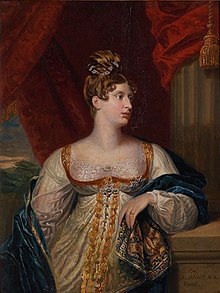 King George III had fifteen children so it is surprising, to say the least, that his reign almost ended with a succession crisis, yet in 1817 his only legitimate granddaughter, Princess Charlotte, died leaving the kingdom wondering who would succeed while a level of public grief comparable to that of Princess Diana’s death in 1997 erupted in the streets.
King George III had fifteen children so it is surprising, to say the least, that his reign almost ended with a succession crisis, yet in 1817 his only legitimate granddaughter, Princess Charlotte, died leaving the kingdom wondering who would succeed while a level of public grief comparable to that of Princess Diana’s death in 1997 erupted in the streets.
Charlotte was the daughter of George, Prince of Wales, the eldest son of George III both of whom were unpopular with the public. The king suffered from bouts of mental illness which ultimately led to permanent insanity, while his son who was Prince Regent during his father’s illness was considered selfish and dissolute earning him the lasting contempt of the public and parliament. Charlotte, by contrast, was hoped to be very different from her father and grandfather and the public took a keen interest in every aspect of her life. Her father kept her largely isolated during her life, which further endeared her to the public, and when she was allowed out crowds would gather to cheer her.
Although she was known to engage in inappropriate behaviour, this seems to have been tempered after her marriage to Prince Leopold of Saxe-Coburg-Saalfeld. Whenever the two were seen in public they were met with applause and when Charlotte fell pregnant the child became the source of intense public interest. The baby was a stillborn boy and Charlotte died the following day and the country went into mourning.
The Prince Regent was so aggrieved he could not attend her funeral, while her mother heard the news from a passing local and fainted in her carriage. Prince Leopold was devastated and a previous suitor, the Prince of Orange, was said to dissolve into tears, while his wife ordered their court into mourning. Meanwhile in England linen-drapers sold out of black cloth as even the homeless tied black ribbon to their arms. Businesses closed for two weeks as a mark of respect and ships flew their flags at half-mast while the media called for an inquiry into the quality of Charlotte’s medical care during her labour. Three months later the doctor who attended the princess killed himself which led to the event being referred to as a ‘triple tragedy’.
Charlotte’s body lay in state where streams of visitors passed her to pay their respect. Later, her body, and that of her stillborn son were moved to St. George’s Chapel and crowds dressed in black gathered to line the route. A memorial service held at St. Paul’s Cathedral attracted unprecedented crowds which resulted in broken gates and windows as people tried to gain access. In the months that followed songs, poems, music and sermons were written lamenting the loss of the princess, while memorabilia was produced en masse printing Charlotte’s likeness on anything that would hold it.
Charlotte’s parents’ dislike of each other was well known and the two had separated after Charlotte’s birth, and the Prince regent had treated his wife with increasing cruelty. It was impossible that the two would reconcile and as Caroline was almost fifty it was unlikely she would have another child even if they had done so. Of George’s eleven surviving siblings not one had married and had a legitimate heir, with many of his brothers preferring to cohabit with their mistresses rather than find a wife. In the wake of Charlotte’s death, however, the media and parliament brought pressure upon the king’s sons to marry and secure the succession. Two years later, the matter was brought to a close when George III’s fourth son, Edward, had a daughter; Victoria.
If you’d like to join me for more fun and games in picking apart history, and other behind the scene tangents, you can support me via my Patreon.













